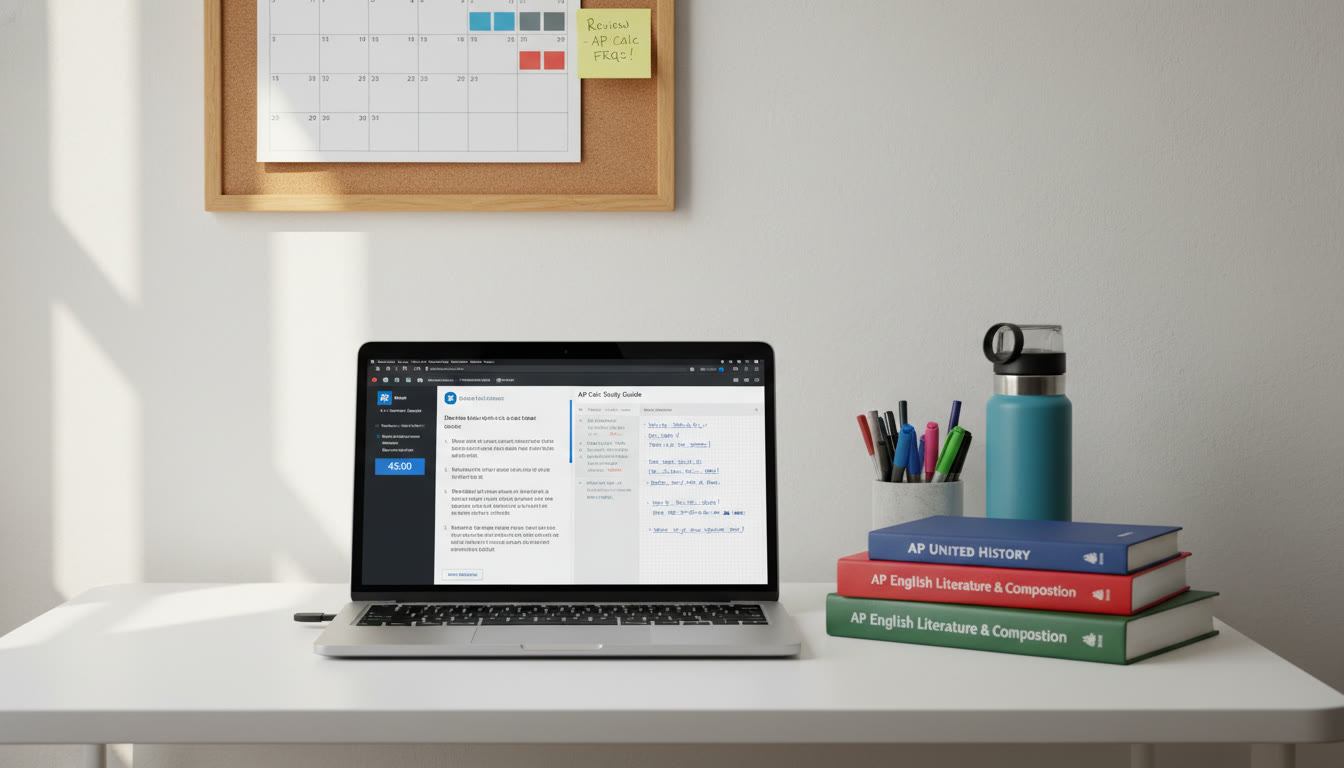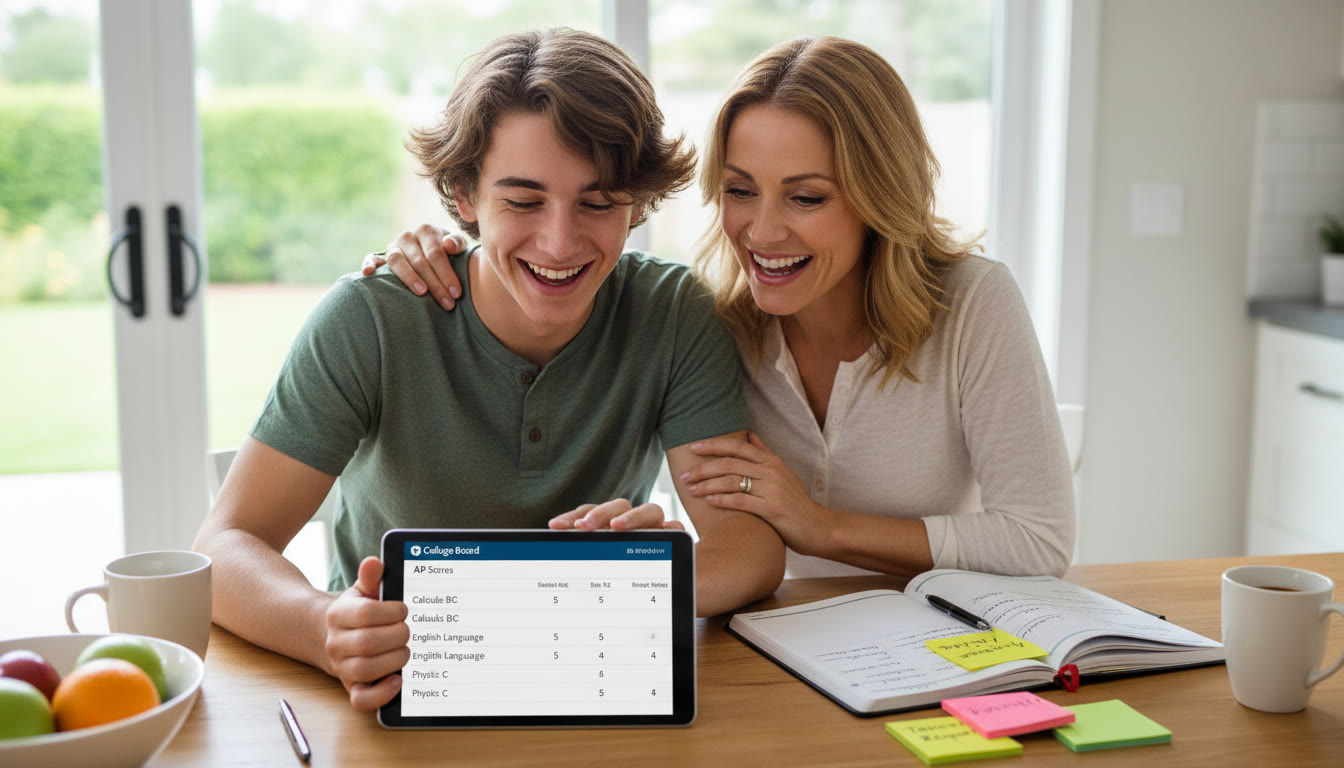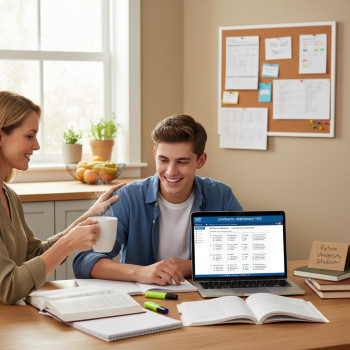AP vs SAT: A Friendly Roadmap Before We Talk Tools
There are two common threads when families ask, How should we use apps and digital tools to study? context and purpose. AP exams are about demonstrating college-level mastery in a specific subject. The Digital SAT measures reasoning and math skills across a broad band of topics. Both live in the College Board ecosystem, but the way you build a technology stack for each should match what the exam rewards.
Think of it this way: if the SAT is a sprint that rewards polished timing, pacing, and problem patterns, many AP exams are marathons that demand deep conceptual connections, extended writing, and disciplined practice over months. The right digital stack turns confusion into clarity and wasted hours into focused progress.
What s Different About Digital Versions Why That Matters for Apps
Two practical realities shape your tool choices:
- Both APs and the SAT now have robust digital components (AP has digital administrations in many subjects; the SAT is delivered digitally in most regions). That means typing essays, interacting with on-screen math tools, and navigating test interfaces not just pencil and paper.
- The reporting and diagnostic data you get after a digital test are richer. The College Board s online reports and classroom portals break performance into skills and content areas, which makes adaptive practice and targeted review more effective if you use them.
So pick tools that mirror the test experience and let you act on diagnostics: typed practice essays, on-screen math work, timed sections, and platforms that accept question formats similar to the exam.
How to Choose Your App Stack: A Simple Decision Tree
Before adding apps, answer three quick questions together with your student:
- What s the primary goal? (Score goals, college credit, course mastery, scholarship eligibility.)
- How much time can we commit per week? (Short, steady bursts beat rare marathon sessions.)
- What s the student s learning style? (Visual, writing-heavy, interactive, or coaching-focused?)
Use your answers to steer toward a stack that balances content practice, exam simulation, planning, and feedback. Below is a recommended stack for three common profiles.
Profiles and Recommended Stacks
| Profile | Best-Fit Stack | Why It Works |
|---|---|---|
| AP Deep Diver (e.g., AP Biology, AP US History) | AP Classroom + Note App + Timed Essay App + Video Lectures + Flashcard App | AP Classroom provides official practice and progress checks; notes + spaced repetition lock in facts; timed essays practice free-response format. |
| SAT Polisher (targeted score increase) | Khan-style Official Practice + SAT Official App + Digital Practice Tests + Error Log Spreadsheet | Official practice reproduces the question style and timing; an error log makes progress visible and repeatable. |
| Mixed-Load Student (APs + SAT simultaneously) | Calendar/Planner + Prioritized Microblocks + Hybrid Practice App + 1-on-1 Tutoring | Combines daily pacing, subject switching, and personalized guidance to avoid overload and ensure alignment with goals. |
Tool Types You ll Want And What to Use Them For
Here s a breakdown of the functional categories and how each helps for AP or SAT prep.
1) Official Practice Platforms (Essential)
Why: They replicate question types, scoring rubrics, and interfaces that most closely resemble the test. For APs, AP Classroom is your go-to for topic questions, AP Daily videos, and progress checks. For the SAT, use the official digital practice tests and the BigFuture resources to simulate test conditions and check score-aligned progress.
2) Timing & Test-Simulation Apps (Critical)
Why: Digital timing, section breaks, and pacing cues are different from paper. Use full-length timed simulations on the same device type your student will test on. Practice typing essays in the same environment and using the in-test calculator tools where permitted.
3) Knowledge Capture & Spaced Repetition (High Value)
Why: APs reward durable knowledge. Use flashcard apps with spaced repetition for vocab, equations, dates, and formulas. Keep a structured notes system that connects concepts across units for example, linking themes on an AP History timeline or tracing causal chains in AP Biology.
4) Writing Feedback & Rubric Tools (Important for AP Free Response)
Why: AP free-response questions require structure thesis, evidence, analysis. Tools that let students write, annotate, and get rubric-based feedback are invaluable. Simulate the exact free-response prompt types and practice writing under timed conditions. At this stage, human feedback from an expert is transformative: a single targeted session can clarify what earns points versus what wastes time.
5) Analytics & Progress Trackers (Makes Your Effort Strategic)
Why: Digital test reporting slices performance into skill areas. Use trackers (even a simple spreadsheet) to map recurring errors: Are mistakes careless? Conceptual? Pacing-related? When you can see the pattern, you can pick the perfect next resource.
Putting the Stack Together Sample Workflows
Two real-world weekly workflows: one for a student concentrating on an AP course, the other for a student balancing APs and Digital SAT prep.
AP-Focused Weekly Workflow (Example: AP Chemistry)
- Monday: 30 45 minutes AP Classroom Topic Questions + short review notes in a note app.
- Wednesday: 45 minutes Watch AP Daily videos on key concepts; create 10 flashcards for spaced repetition.
- Friday: 60 minutes Timed practice set (digital) focusing on stoichiometry problems; record errors in an error log.
- Sunday: 60 90 minutes Guided 1-on-1 tutoring session (or teacher review) to target misconceptions; update the concept map.
Combined AP + SAT Weekly Workflow
- Monday: 25 minutes SAT Official Practice (timed mini-section) + short review of wrong answers.
- Tuesday: 40 minutes AP Classroom practice and flashcards for memory items.
- Thursday: 30 minutes SAT practice using test-simulation app; focus on pacing strategies.
- Weekend: 90 120 minutes Alternating full practice for either AP timed free-response or digital SAT practice test. Follow with analytics review and plan next week s focus.
Device Choices and Practical Setup
Match the device to the test environment:
- Use the same form factor as the test delivery. If the SAT will be taken on a laptop, practice on a laptop; if on a tablet, practice on a tablet.
- Keep a single, organized folder for practice tests and separate folders for notes and error logs.
- Use headphones for video lessons and a comfortable keyboard for essay practice.

How Human Coaching Amplifies Digital Prep
Technology scales practice and supplies data but human expertise selects what to act on. That s why thoughtfully used tutoring is more of a multiplier than a nicety. Personalized 1-on-1 guidance helps turn diagnostic insights into micro-decisions: which question types to re-teach, how to reorganize time blocks, and how to write a high-scoring AP free-response paragraph under time pressure.
Programs like Sparkl s personalized tutoring provide tailored study plans, expert tutors who map directly to AP rubrics or SAT score goals, and AI-driven insights to prioritize practice. When used sparingly and strategically for example, a few 1-on-1 sessions per month this kind of support accelerates learning while keeping technology-driven practice efficient and focused.
Data-Driven Review: How to Read Diagnostics and Act
After a digital practice test, don t panic. Here s a four-step way to turn results into progress:
- Scan high-level categories: which content domain or skill area is lowest?
- Drill down: inspect individual items are errors careless, conceptual, or procedural?
- Create a two-week micro-plan: address the weakest area with targeted practice, then retest a comparable set of items.
- Log outcomes and iterate celebrate small wins to reinforce motivation.
Sample Comparative Table: How AP and Digital SAT Ask Different Things
| Dimension | AP Exams | Digital SAT |
|---|---|---|
| Primary Skill Tested | Deep subject knowledge and college-level thinking in a discipline | Evidence-based reading, writing, and math reasoning across varied topics |
| Typical Response Types | Multiple-choice and extended free-response (essays, labs, problem solutions) | Multiple-choice, grid-ins, and short constructed responses in a timed digital format |
| Prep Focus | Conceptual depth, long-form writing/editing, experiment or document analysis | Pacing, pattern recognition, command of core math and reading strategies |
| Best Digital Tools | AP Classroom, subject-specific simulations, video lectures, flashcards | Official digital practice tests, timed section apps, diagnostics, error logs |
Common Mistakes Families Make With Digital Stacks (And How to Fix Them)
- Buying too many apps at once. Fix: Start with official resources and one strong analytics or flashcard tool add more only when you have a clear gap.
- Treating practice like passive review. Fix: Convert passive review into active retrieval. Timed, test-like conditions are not optional; they build the executive skills the test demands.
- Over-reliance on AI summaries without practicing skills. Fix: Use AI-driven notes only to clarify concepts, then do the problem sets yourself and get human feedback on writing tasks.

When to Add Personalized Tutoring
Bring in a tutor when practice plateaus, when diagnostic patterns repeat, or when a student needs structured accountability. Targeted tutoring one to three focused sessions per month can translate general practice into score improvements by fixing strategy, reducing careless errors, and building test-specific habits (like how to read evidence-based questions or structure an AP essay).
Sparkl s model of personalized tutoring pairs expert tutors with tailored study plans and AI-driven insights so sessions are efficient and aligned to the student s diagnostic data. That combination human judgment plus data is especially powerful when students are balancing AP workloads with SAT prep.
Putting It All Together: A 90-Day Plan Template
Use this template whether you’re focused on one AP, the SAT, or juggling both. Adjust durations and intensity to match your schedule.
- Days 1 14: Baseline diagnostics. Take a full digital SAT practice test and one timed AP practice FRQ. Build an error log and prioritize three target areas.
- Days 15 45: Focused skill blocks. Alternate targeted practice for the SAT and AP using spaced repetition and timed sections. Add one tutoring session for feedback on writing and pacing.
- Days 46 75: Mixed simulation. Start combining mini-tests that mimic test-day toggling between speed and depth. Use analytics to adjust the micro-plan weekly.
- Days 76 90: Peak and taper. Take a final full simulation for each test. Focus the last week on light review, confidence-building, and test logistics (device checks, essay templates, and test-day routines).
Final Notes Mindset, Logistics, and What Really Moves Scores
Technology is powerful but only when guided by a plan and human judgment. The best stacks are lean, purposeful, and tailored. Tools should save time, not create busywork. If your student struggles to translate practice into score gains, introduce human feedback: one-on-one tutoring sessions, targeted essay reviews, or a coach who helps interpret diagnostics.
Remember: small, consistent improvements compound. A focused 30-minute practice session with a clear target and a quick tutor check-in once every two weeks will usually beat unfocused study marathons. Use official practice to anchor your expectations, a few high-quality apps to automate spaced practice and simulations, and periodic human coaching such as Sparkl s personalized tutoring to sharpen strategy and sustain momentum.
Quick Checklist to Build Your AP vs SAT Digital Stack
- Start with the official College Board tools for both AP and the Digital SAT.
- Choose one timing/simulation app and one knowledge-capture tool (notes or flashcards).
- Keep an error log and review it weekly; make that your north star for what to practice next.
- Schedule periodic human feedback tutor, teacher, or mentor to validate progress and refine strategies.
- Practice on the device you ll use for the test and simulate test-day conditions at least three times before test day.
Parting Thought
AP and the Digital SAT probe different types of preparation, but both reward clarity, consistency, and feedback. Build a stack that respects the differences: deep, cumulative practice for APs and efficient, pattern-aware practice for the SAT. Blend in personalization whether through careful self-analysis or a few targeted tutoring sessions and you ll turn attention into achievement.
If you d like, I can help you design a personalized 8 12 week app stack and study plan tailored to a student s current score, AP subjects, and weekly availability including where targeted 1-on-1 tutoring sessions will give the most return. Just tell me the subjects and your weekly time budget and we ll build it together.















No Comments
Leave a comment Cancel